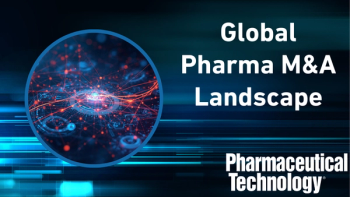
- Pharmaceutical Technology\'s In the Lab eNewsletter-03-06-2019
- Volume 14
- Issue 3
Virtual Docking Library to Aid Drug Discovery
A study funded by the National Institutes of Health has created a virtual library expected to expand the availability of “make-on-demand” molecules for drug discovery.
On Feb. 6, 2019, the National Institutes of Health (NIH) announced that researchers have launched a virtual docking library expected to grow to more than one billion molecules by 2020.
In the
“To improve medications for mental illnesses, we need to screen huge numbers of potentially therapeutic molecules,” stated Joshua A. Gordon, MD, PhD, director of NIH’s National Institute of Mental Health (NIMH), in a press release. “Unbiased computational modeling allows us to do this in a computer, vastly expediting the process of discovering new treatments. It enables researchers to virtually ‘see’ a molecule docking with its receptor protein-like a ship in its harbor berth or a key in its lock-and predict its pharmacological properties, based on how the molecular structures are predicted to interact. Only those relatively few candidate molecules that best match the target profile on the computer need to be physically made and tested in a wet lab.”
“The D4 receptor is of particular interest to NIMH because of its role in cognition and other executive functions of the brain’s prefrontal cortex that are often disturbed in mental illnesses,” said Laurie Nadler, PhD, of the NIMH Division of Neuroscience and Basic Behavioral Science, program officer for the grant supporting the D4 receptor study.
A number of potential drug-like molecules are known to exist, yet hundreds-of-millions to billions of diverse molecules have remained inaccessible due to limitations of existing methods used to compile molecular libraries, as stated by the researchers. For example, the virtual structure-based docking technique risks finding many decoys; flaws in the model allow for molecules that appear plausible but turn out to be biologically inactive. To overcome this challenge, the researchers focused on molecules that result from 130 well-characterized chemical reactions using 70,000 different chemical building blocks. Computer simulations with these molecules showed that as the size of a library grew, the ratio of ‘true actives’ to decoys increased, just as a study’s statistical power increases with a larger sample.
The researchers then synthesized and tested in a lab the top 549 molecules that virtually docked best with the D4 receptor and 44 molecules that docked best with the enzyme. These studies revealed several novel drug-like molecules that bind only to the D4 receptor (and not the closely related D2 or D3 dopamine receptors) and turned the receptor on or off. Additionally, one molecule (4163) emerged as the most potent binder of AmpC. A virtual molecule’s docking rank predicted its actual likelihood of binding to the D4 dopamine receptor in a lab assay.
The discovery of new and potent molecules for both targets also confirmed that ultra-large libraries contain molecules better suited to a given receptor structure than smaller libraries and that virtual docking can recognize the molecules and predict the total number of expected active compounds within a library.
“This new study illustrates the potential of unbiased computational screening and molecular docking to discover new tool molecules and potential therapeutic agents, providing a rapid and robust pathway that will lead directly to novel drug treatments for mental illnesses,” added Gordon in the release.
The study was supported in part by grants from NIMH, National Institute of General Medical Sciences, the NIH Common Fund, and National Institute of Neurological Disorders and Stroke.
Source:
Articles in this issue
almost 7 years ago
Ensuring Proper Analytical Method Transferalmost 7 years ago
Lab Management Solution with Enhanced Data Privacyalmost 7 years ago
New Microscope Combined Imaging Technology with High Speed Analysisalmost 7 years ago
Digitization of Data Analysis and Interpretationalmost 7 years ago
Affinity Chromatography Analysis Column for Antibody Drugsalmost 7 years ago
Charles River to Acquire Citoxlab in $510-Million Dealalmost 7 years ago
Novartis, AbCellera in Antibody Discovery PactNewsletter
Get the essential updates shaping the future of pharma manufacturing and compliance—subscribe today to Pharmaceutical Technology and never miss a breakthrough.




